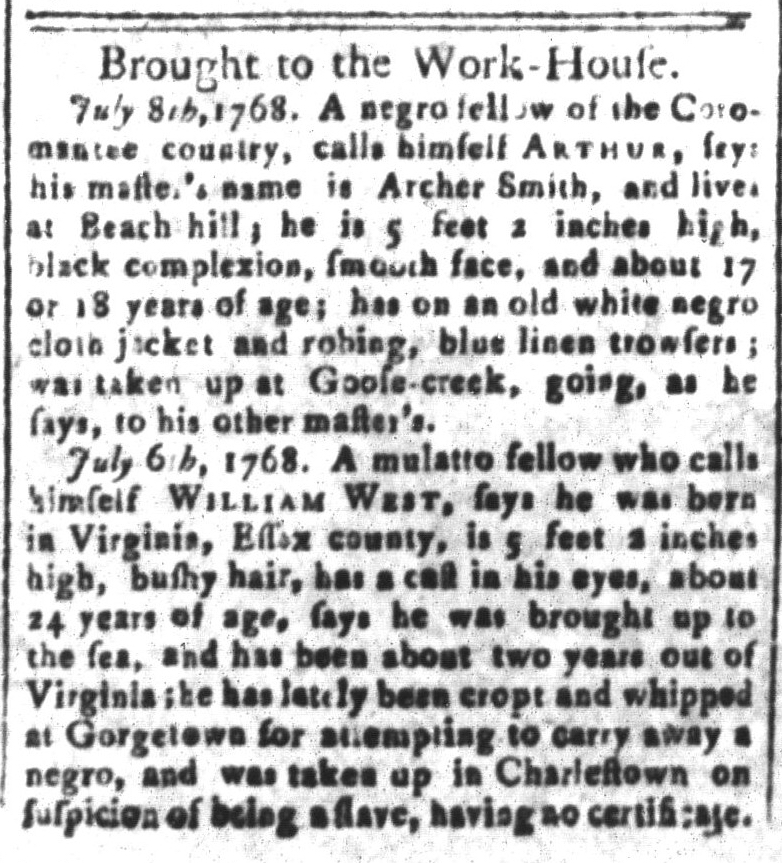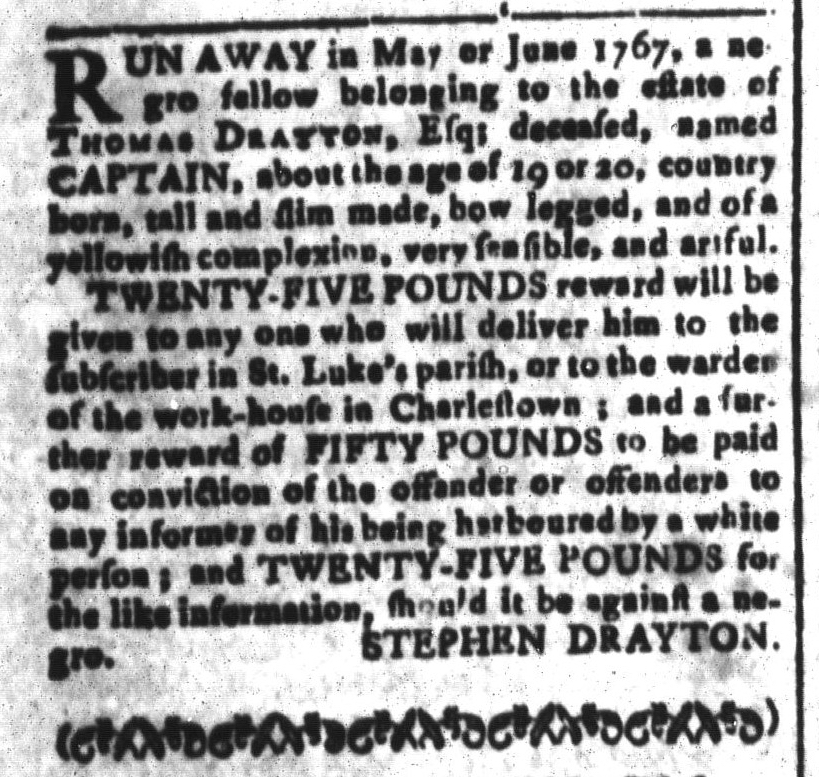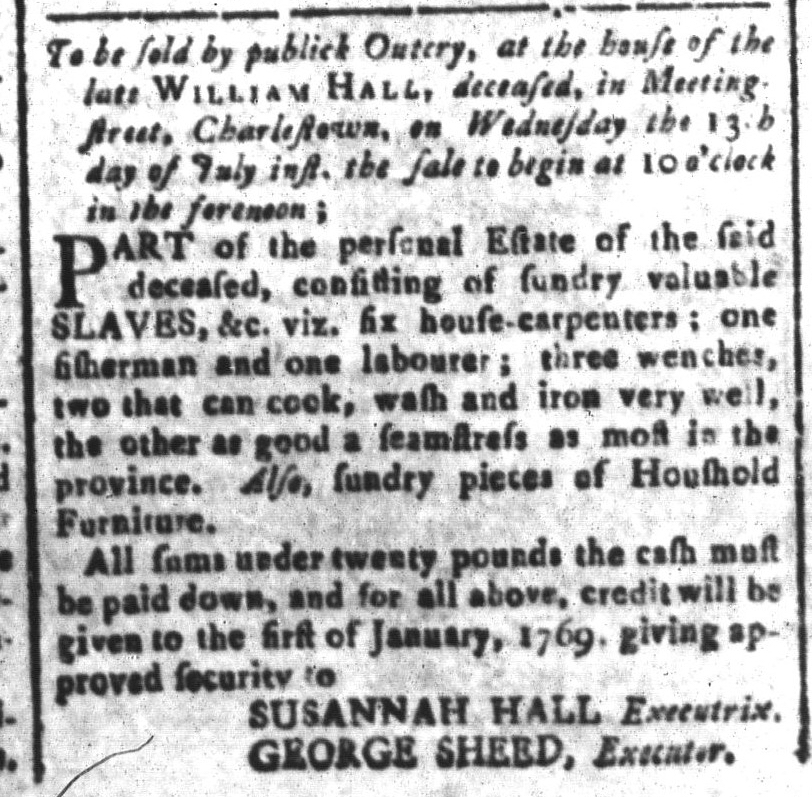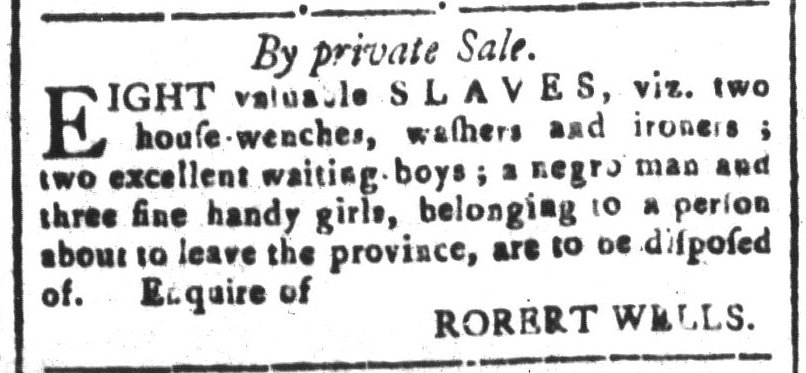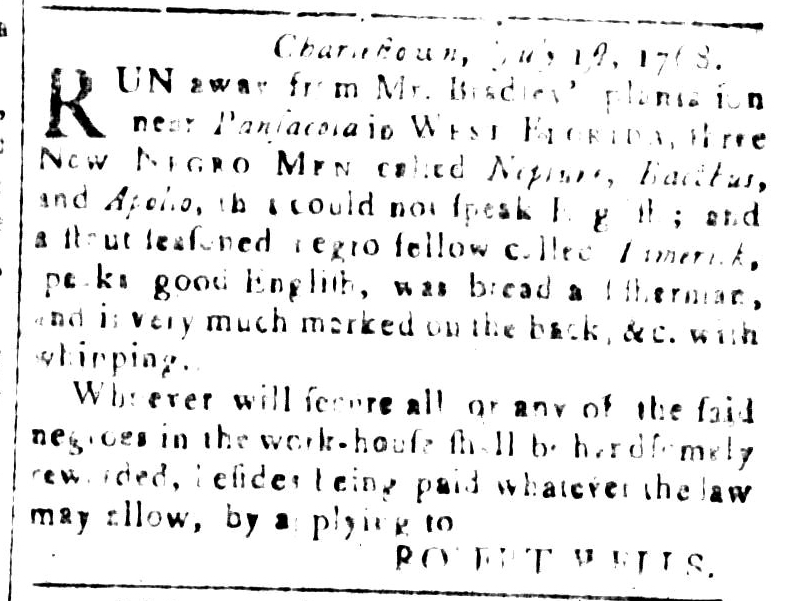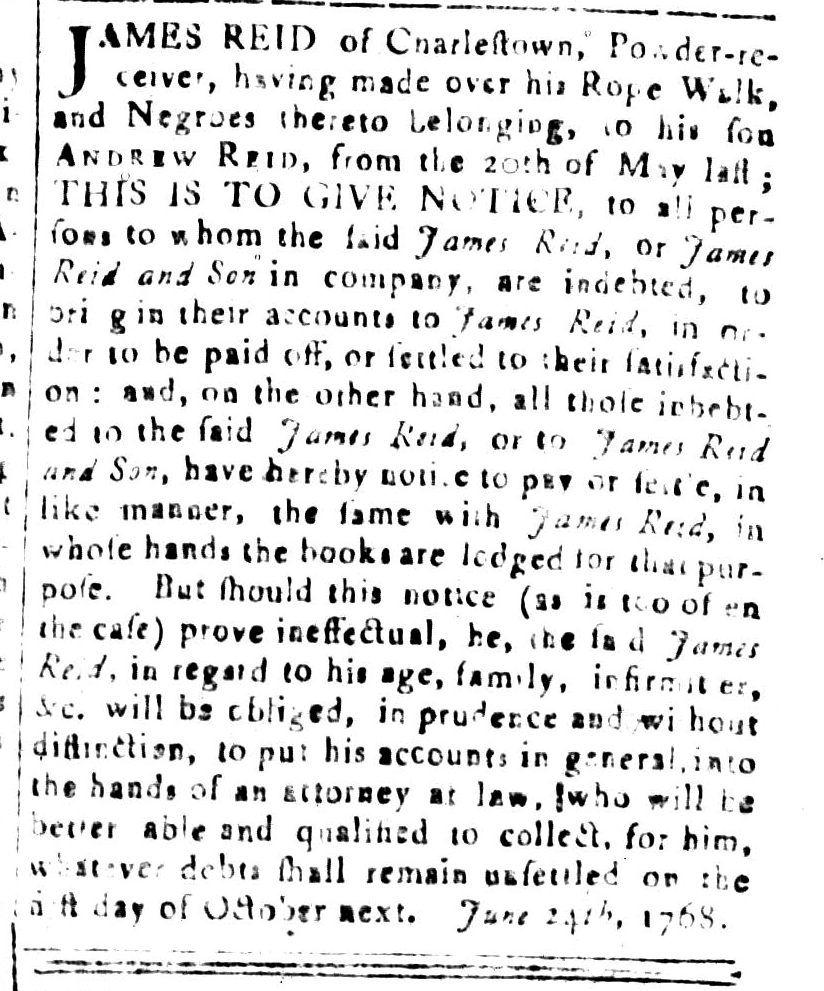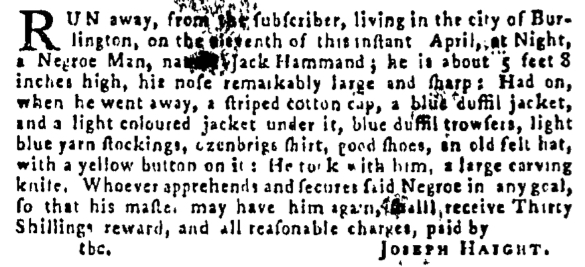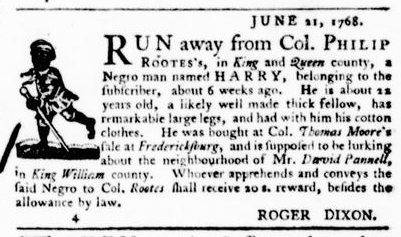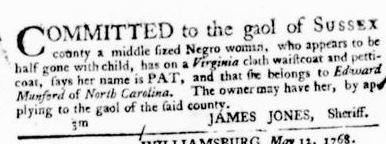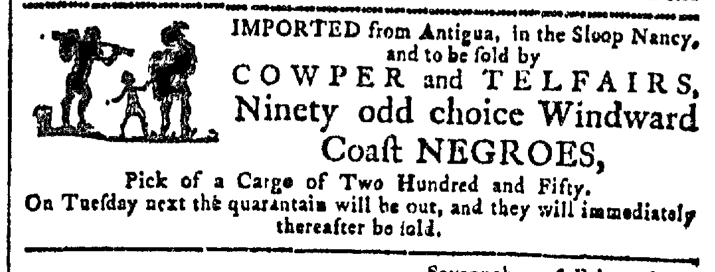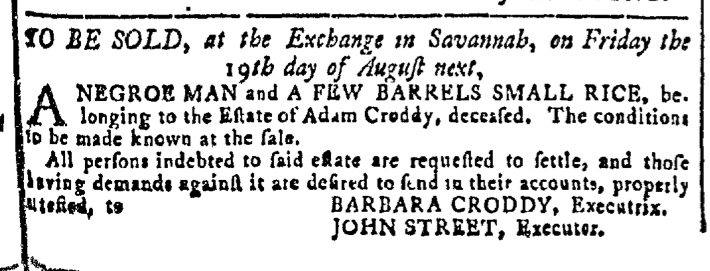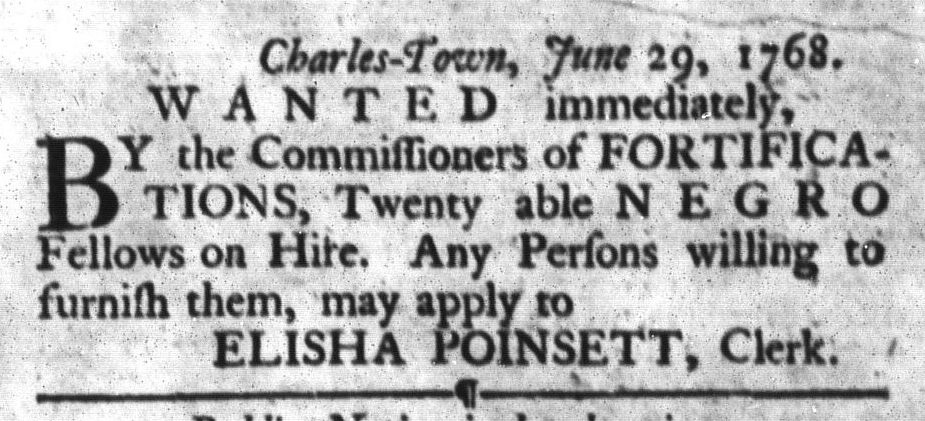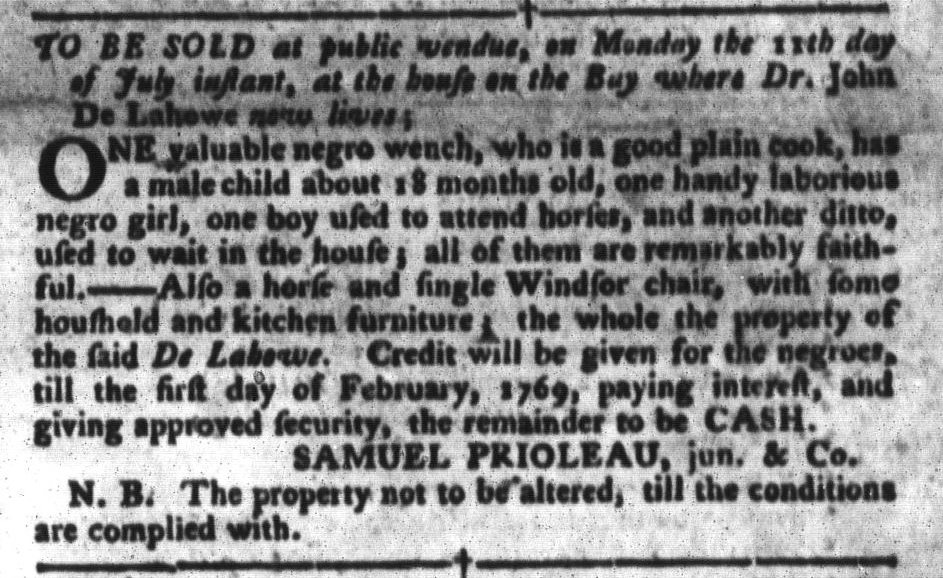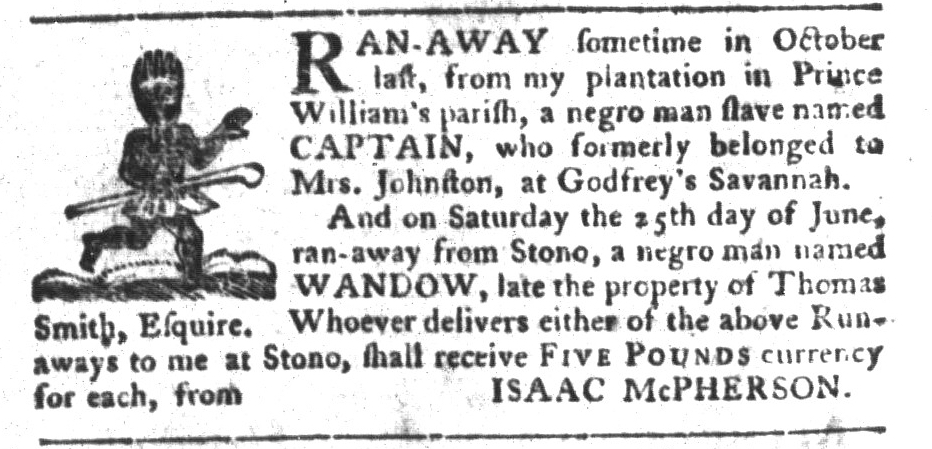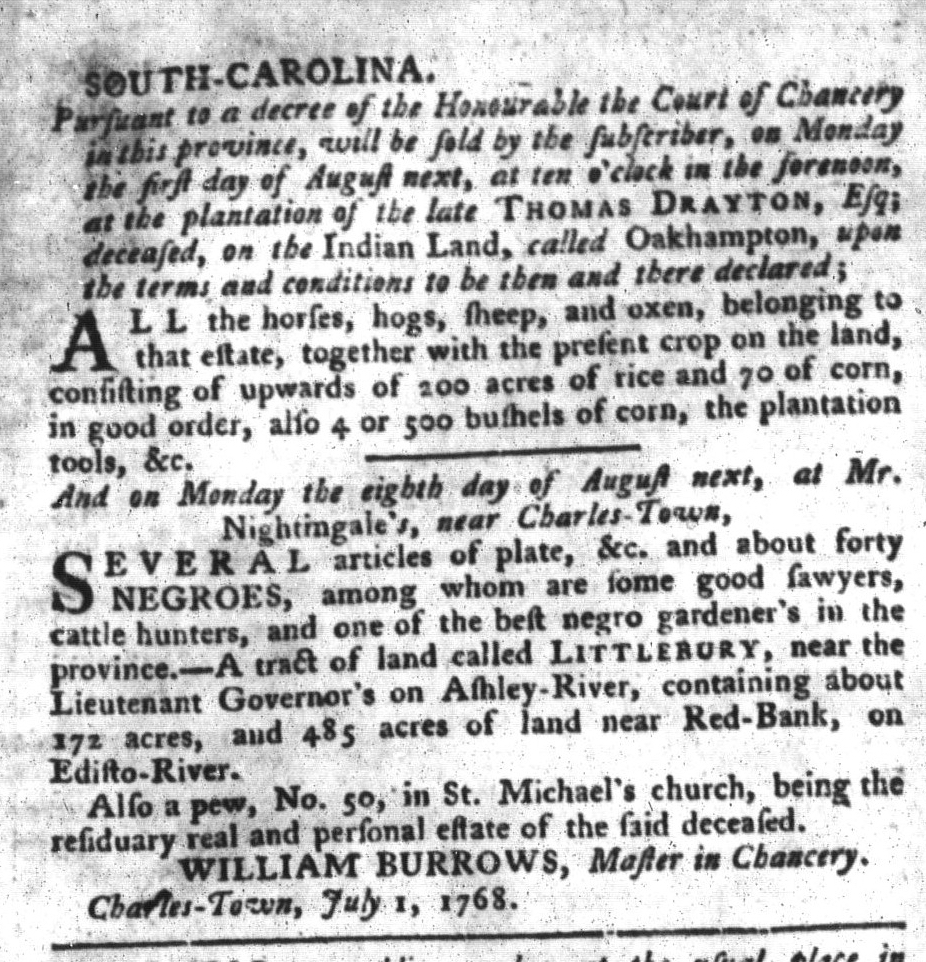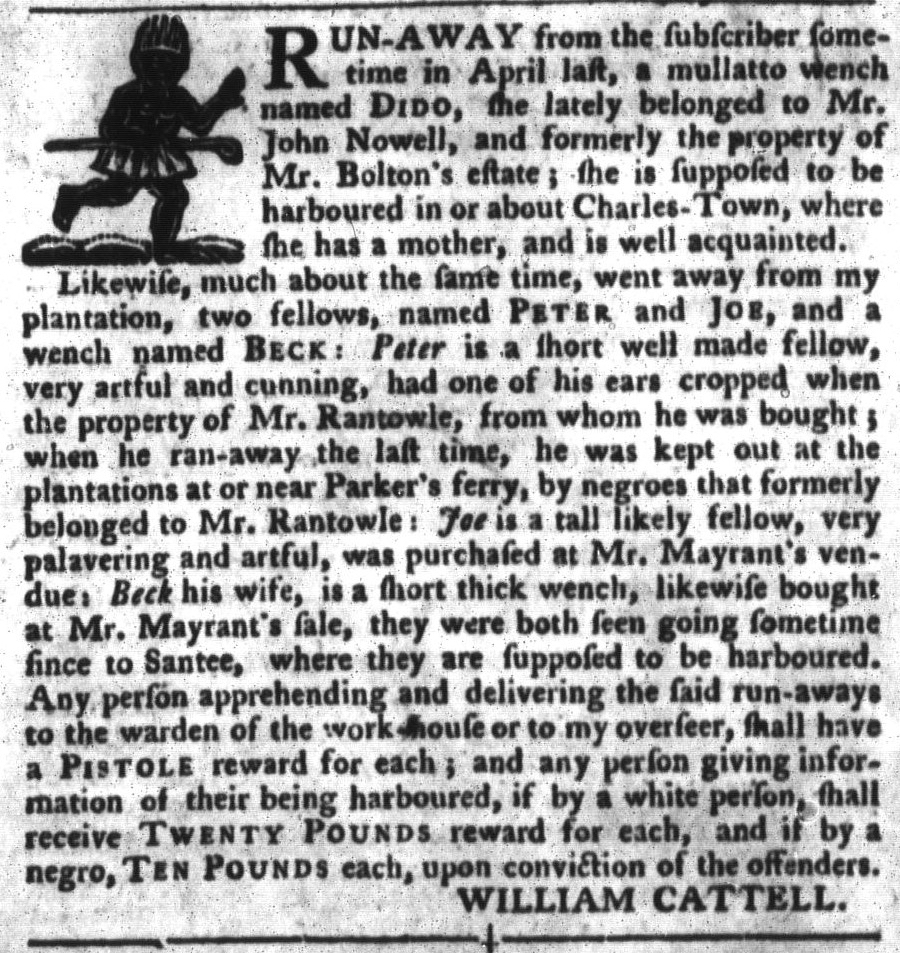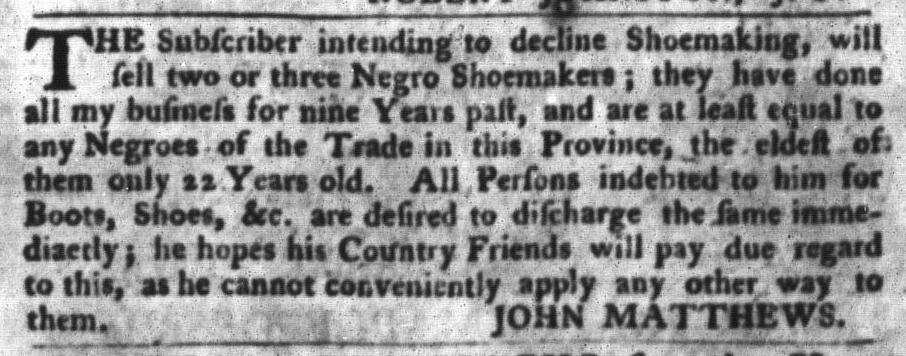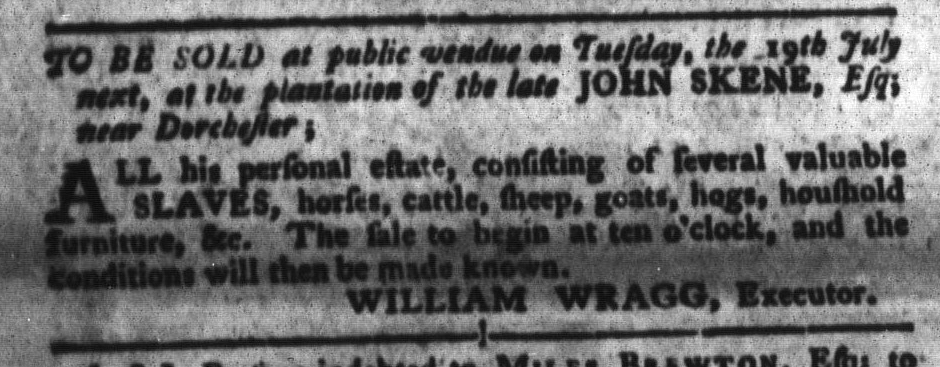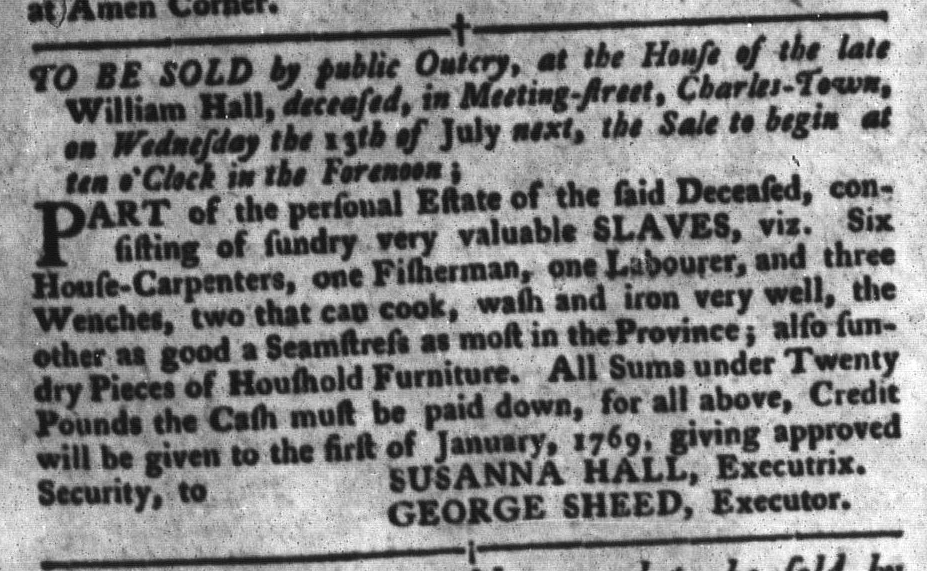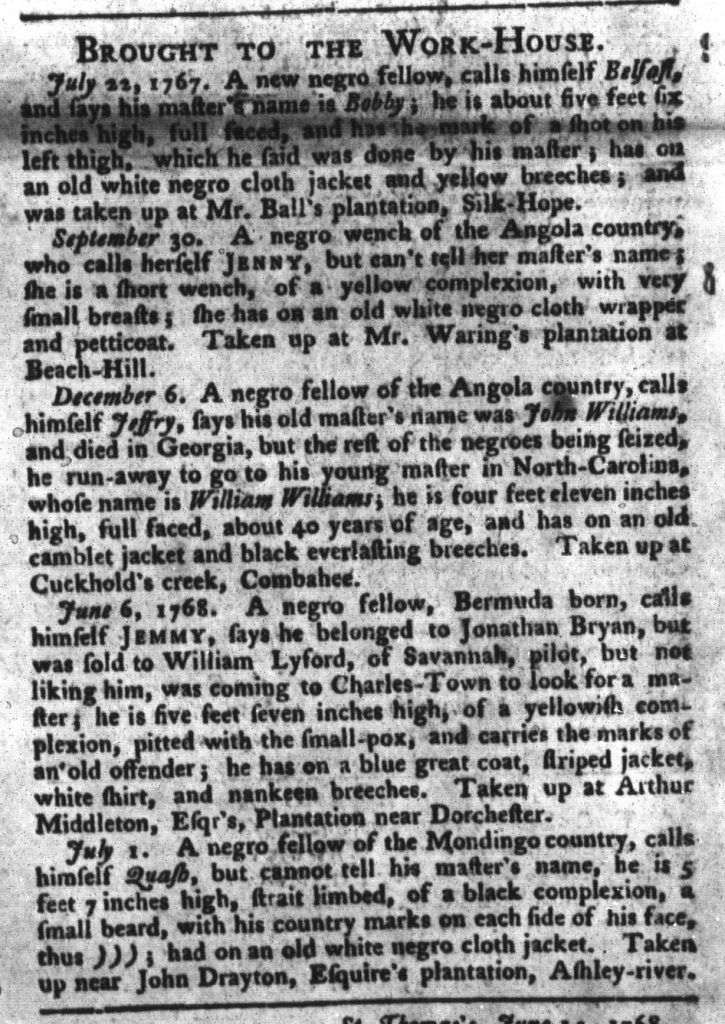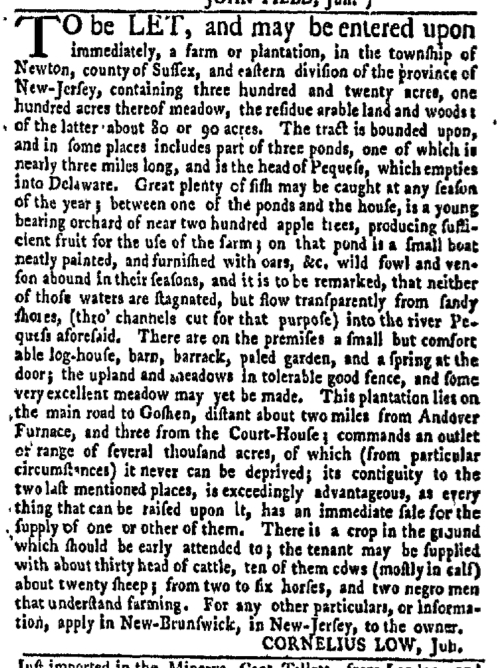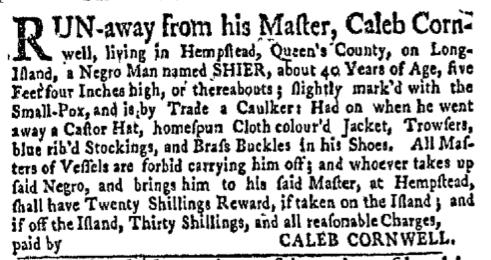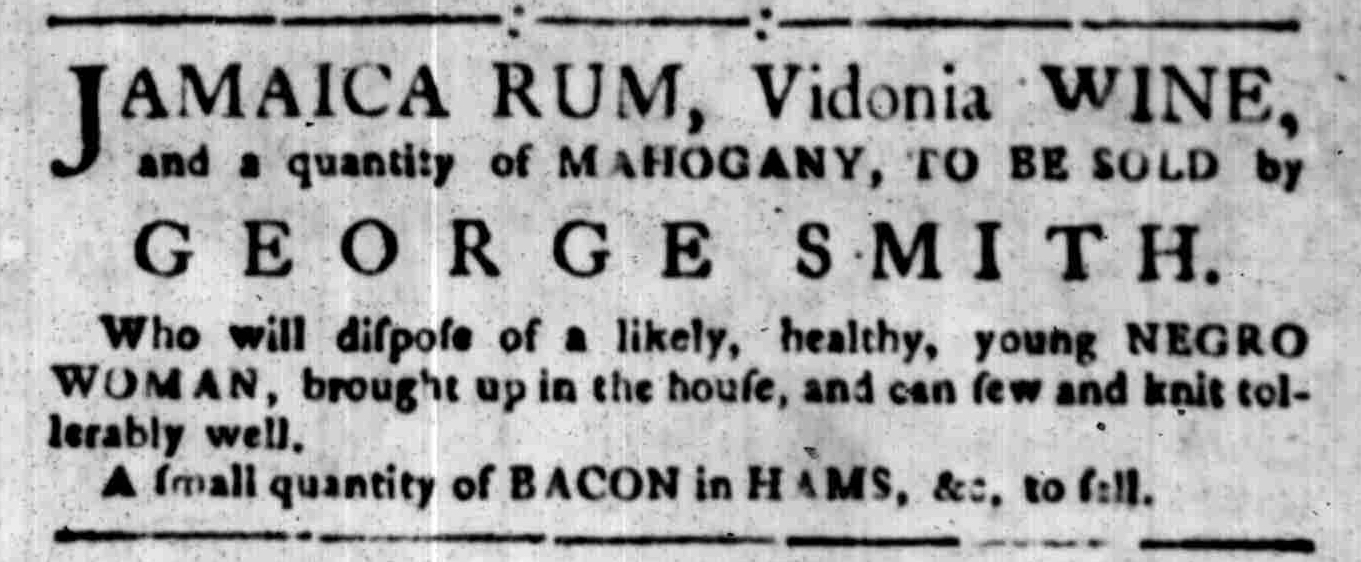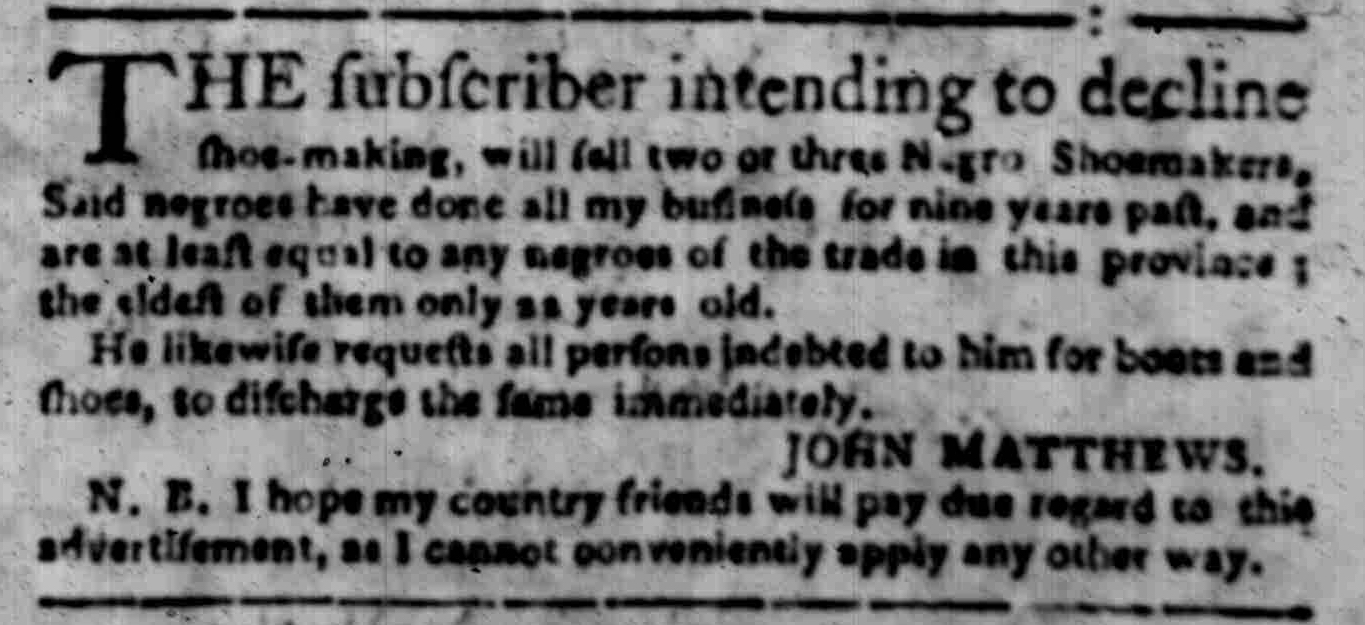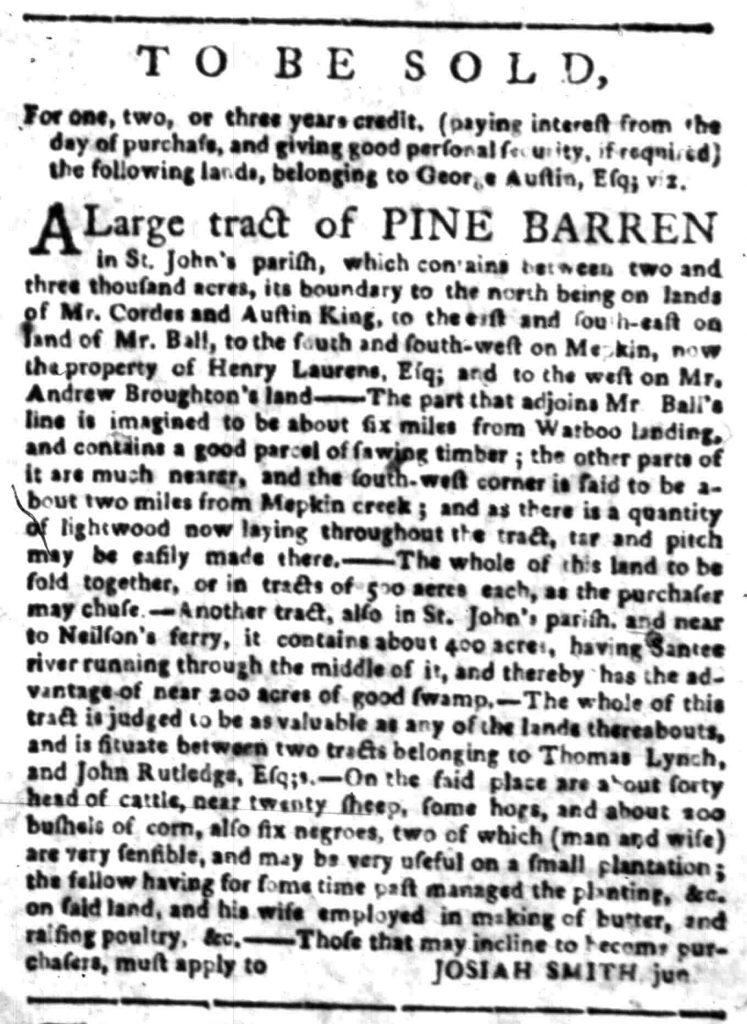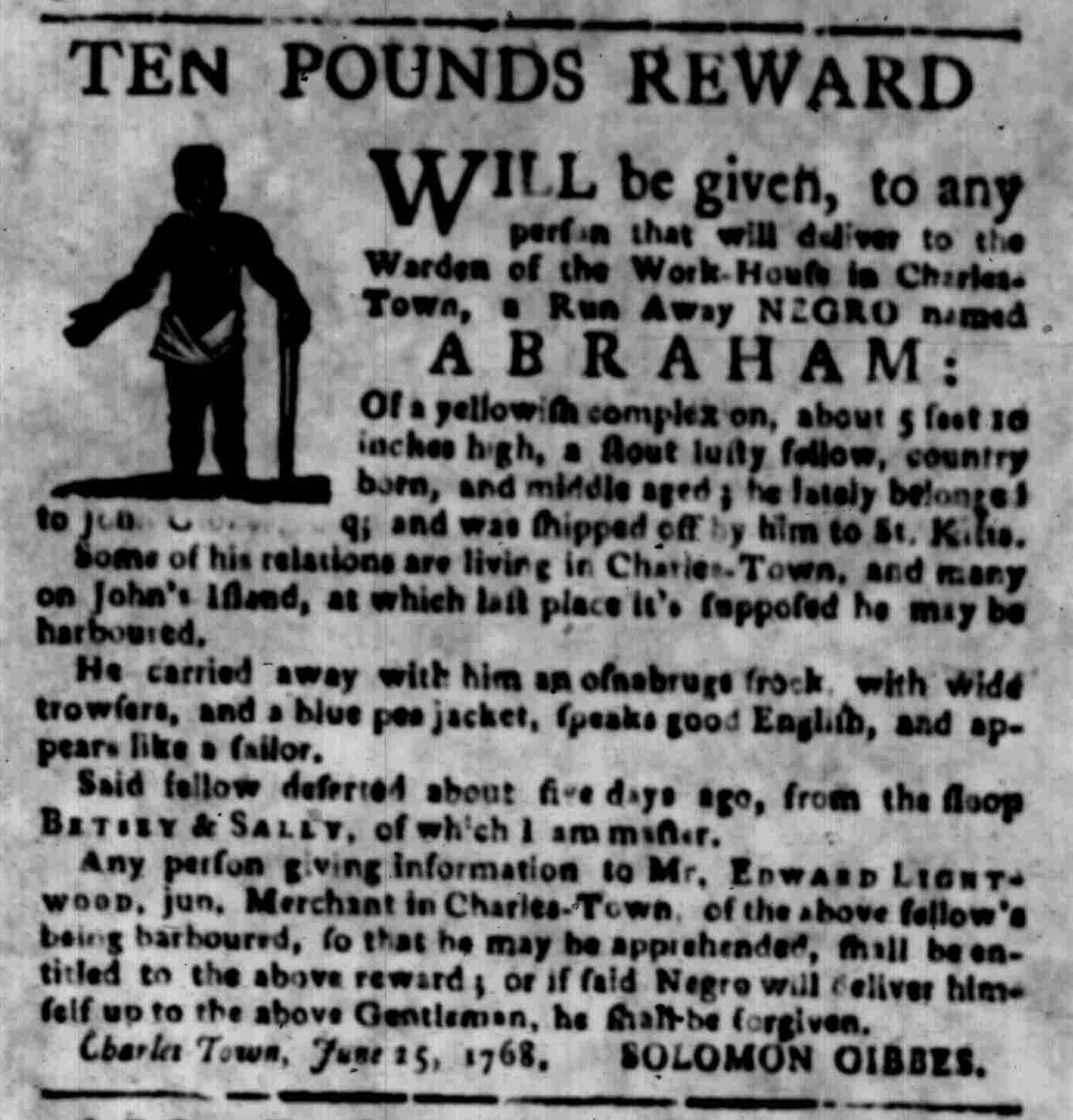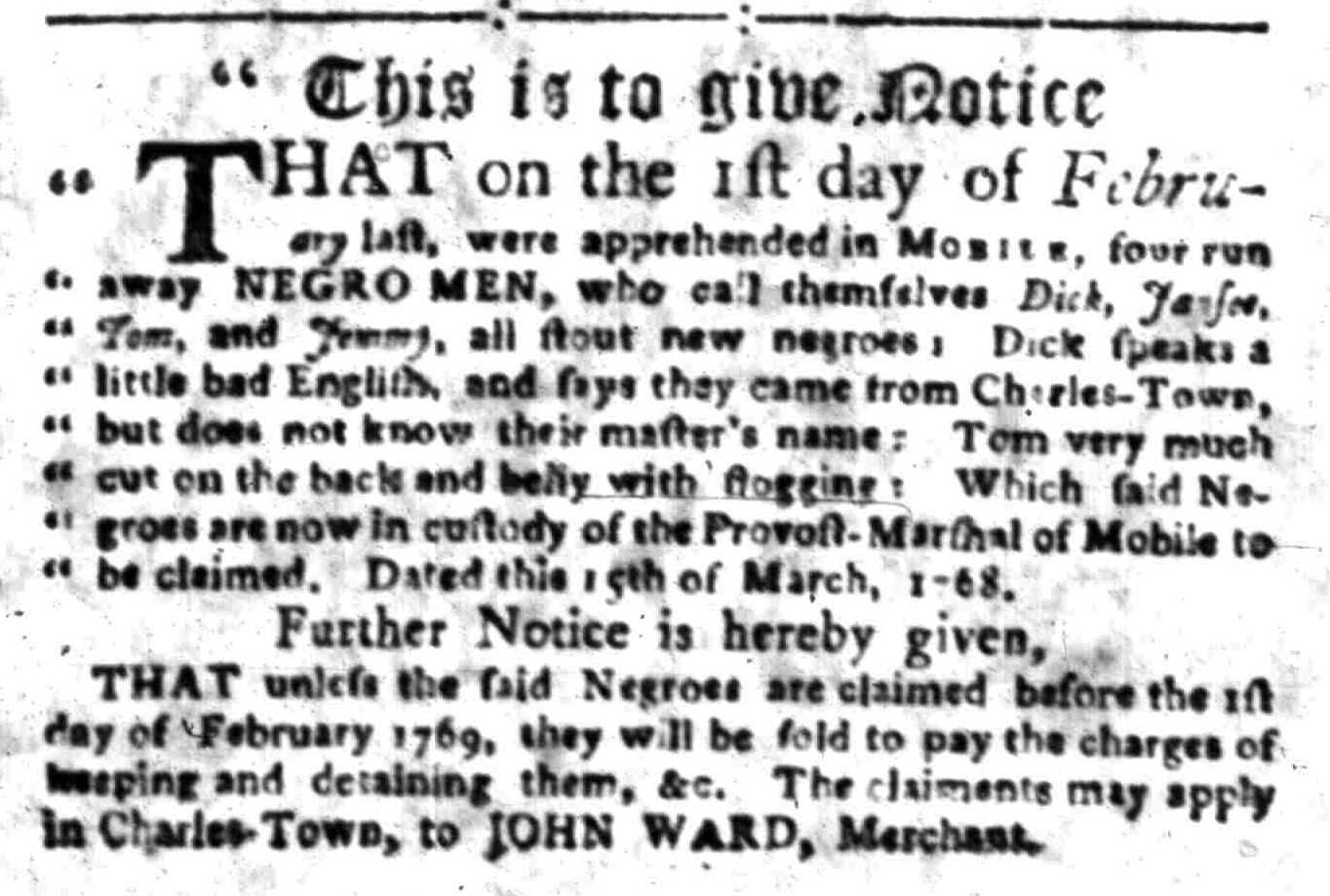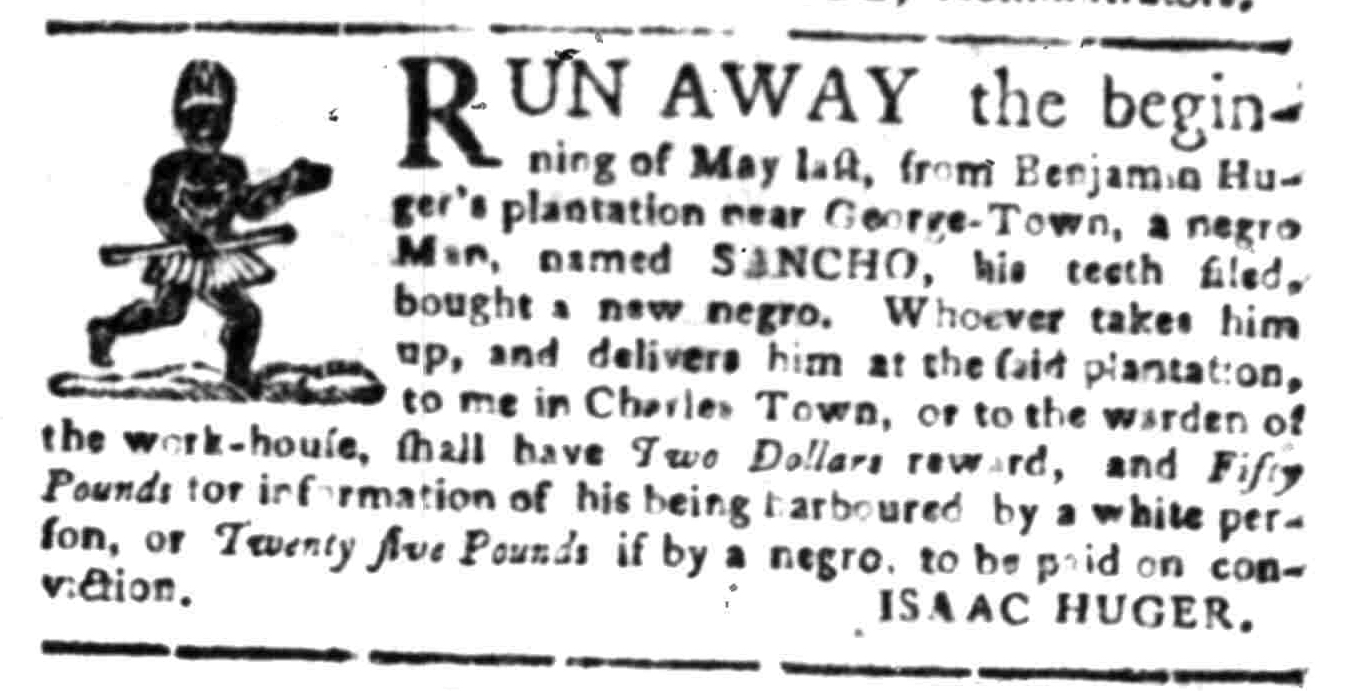What was advertised in a colonial American newspaper 250 years ago today?

“Nathaniel Sheaff Griffith looks upon himself to be greatly abused.”
Nathaniel Sheaff Griffith was not pleased with a “scandalous anonimous Piece” that appeared on the front page of the July 1, 1768, edition of the New-Hampshire Gazette. Although the author did not explicitly name Griffith, it did not take much deduction to determine that “a Man of this abandoned Character, named – N–th–el S––fe G–fi–th, of Hampton” was none other than Nathaniel Sheaff Griffith. The article purported that Griffith had “descended into some Sink for Human Excrements, (from whence it was wished he could never have gotten out, as it was the most proper Place for his Abode)” and then “proceeded to the Meeting-House in Hampton, and in a dirty, filthy and polluted Manner discharged the same upon the Linings and Cushings of a Gentleman’s Pew.” The article went into further detail about how Griffith had not only befouled the pew but, more generally, a house of worship shared by the entire community. It then attributed various moral failings to the perpetrator of this “atrocious and sacrilegious Insult.”
Horrified by this account, Griffith placed an advertisement in the next issue of the New-Hampshire Gazette. Although Griffith could not control the editorial decisions made by the printers, he did exercise greater latitude when it came to paid notices. He wanted the printers to give him equal time and an opportunity to redeem himself in the face of the “scandalous anonimous Piece.” To that end, his advertisement addressed the printers directly, insisting that they “acquaint the Public in [their] next Paper that he shall the next Week publickly acquit himself to their Satisfaction of the scandalous and sacrilegious Acts he is in that Piece charged with.” For the moment, this advertisement did not allow the tale from the previous week to go unanswered. It informed the community, in addition to the printers, that Griffith did not accept the account as presented in the most recent issue. Griffith’s advertisement also made the case that the printers must allow him a more extensive answer, not as an advertisement at his own expense but as a news item, not unlike the “scandalous anonimous Piece.” Perhaps Griffith also believed that by ramping up interest in the dispute among readers that the printers would be more likely to publish his rebuttal.
The next issue of the New-Hampshire Gazette, however, did not feature any items signed by Griffith, neither as news items or advertisements. Griffith may have agonized too long over his response to submit it in time for publication. The issue did include a anonymous piece addressed “To the PRINTERS” that expounded on fourteen “RULES AGAINST SLANDER.” Perhaps Griffith submitted those rules to lay the groundwork for his own response. Perhaps the printers, disappointed not to have Griffith’s response in hand, inserted the “RULES AGAINST SLANDER” themselves as a means of keeping the controversy fresh and encouraging readers to look for more developments in subsequent issues. Perhaps other members of the community, disgusted by the entire exchange, took it upon themselves to provide their own commentary about how to treat one another.
The plot thickened two weeks after Griffith’s advertisement appeared in the July 8 edition. A response from Griffith attributed the “cruel Piece” to “the circumstantial Evidence known to all the Inhabitants of Hampton, to have the Character of as infamous a Liar, as ever existed on this Globe, the scandalous Author of the defamatory Piece, only excepted.” Furthermore, Griffith described the alleged witness as “A Girl who for Ten Dollars more, and another green Gown, may perhaps be induced to swear as roundly & plumply to the Point, as the Author could wish or desire.” Griffith met the attacks against his character with provocative accusations of his own.
Advertisements sometimes entertained colonists because they contained scandal. Runaway wife advertisements, for instance, reflected as poorly on the husbands who placed them as the wives who fled. Sometimes the scandal played out in greater detail when wives or relatives placed responses. In other instances, colonists turned to advertisements to pursue their feuds with rivals they believed had wronged them in some way. News items sometimes presented tabloid accounts of certain people and events, but colonists also made room among the advertisements for a good bit of gossip. On occasion, scandal flowed back and forth between news items and paid notices in eighteenth-century America.



